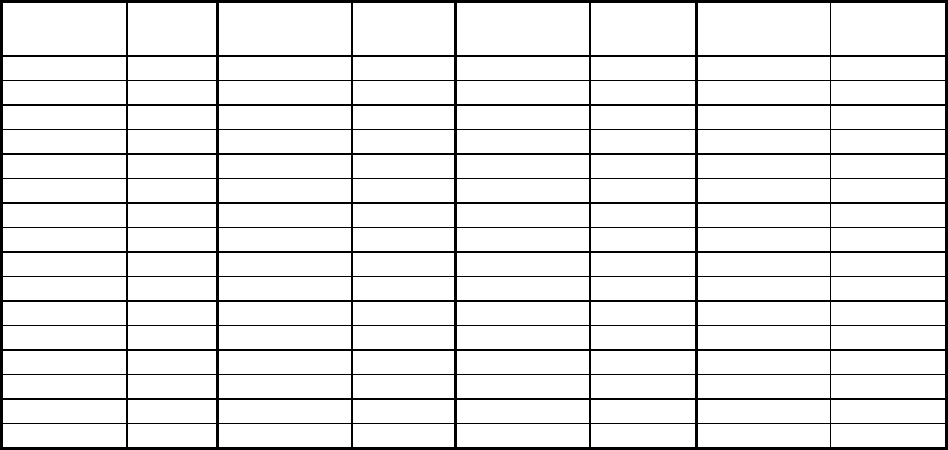
5 - Programming Overview
60
Measurement Log
The Agilent E4370A MCCD logs measurement data at the beginning, end, and can be programmed to log
measurement data throughout each sequence step. Voltage and current for each output are continuously
monitored and whenever either changes by a user-specified threshold or a when a specified time period
has elapsed, a log entry is made for that output. The criteria for the voltage or current change that causes
a log entry is programmable and can be different for each step in a sequence. The time-period parameter
can be set to intervals ranging from one second up to 596 hours. Programming the special value of
CF_INFINITY effectively turns off logging for a particular parameter. Refer to cfSetMeasLogInterval()
in chapter 6 for more information.
Data saved in the Measurement log includes: the output number that this entry applies to, the step
number that was being executed when the entry was made, the time measured from the beginning of the
sequence, the sum of the status bits, the voltage and current measurements, and the accumulated watt-
and amp-hours since the beginning of the step. For ac resistance and dc resistance steps, only the
resistance measurement is entered into the log.
Data from tagged sequence step types is also entered into the measurement log. Tagged measurements
include ac resistance, dc resistance, open circuit voltage, cumulative ampere hours, and cumulative watt
hours. Special filters are provided for selectively reading only the tagged entries from the measurement
log. Refer to cfSetSequenceStep() and cfReadMeasLog() in chapter 6 for more information about tagged
measurements.
The measurement log is a circular queue large enough to hold 349,504 entries. Portions of the total
available measurement log memory are allocated to groups based on the number of cells in each group.
Every group uses a minimum of 21844 memory locations, which is enough memory for up to 16 cells. If
there are more than 16 cells in a group, additional cells use up memory locations in multiples of 4 cells.
Each group of 4 cells use an additional 5461 memory locations. If just one additional cell is appended to
a group, the full amount of 5461 memory locations are allocated. The sum of the memory usage of all
groups must be less than 349,504, otherwise an OUT OF MEMORY message will be generated. Refer to
the following chart for the memory requirements of some sample cell groups. Refer to the "Cell
Grouping" section at the beginning of this chapter for more information about groups.
Cells in
group:
Memory
used:
Cells in
group:
Memory
used:
Cells in
group:
Memory
used:
Cells in
group:
Memory
used:
Up to 16 21844 65 to 68 92837 129 to 132 180213 193 to 196 267589
17 to 20 27305 69 to 72 98298 133 to 136 185674 197 to 200 273050
21 to 24 32766 73 to 75 103759 137 to 140 191135 201 to 204 278511
25 to 28 38227 76 to 80 109220 141 to 144 196596 205 to 208 283972
29 to 32 43688 81 to 84 114681 145 to 148 202057 209 to 212 289433
33 to 36 49149 85 to 88 120142 149 to 152 207518 213 to 216 294894
37 to 40 54610 89 to 92 125603 153 to 156 212979 217 to 220 300355
41 to 44 60071 93 to 96 131064 157 to 160 218440 221 to 224 305816
45 to 48 65532 97 to 100 136525 161 to 164 223901 225 to 228 311277
49 to 52 70993 100 to 104 141986 165 to 168 229362 229 to 232 316738
53 to 56 76454 105 to 108 147447 169 to 172 234823 233 to 236 322199
57 to 60 81915 109 to 112 152908 173 to 176 240284 237 to 240 327660
61 to 64 87376 113 to 116 158369 177 to 180 245745 241 to 244 333121
117 to 120 163830 181 to 184 251206 245 to 248 338582
121 to 124 169291 185 to 188 256667 249 to 252 344043
125 to 128 174752 189 to 192 262128 253 to 256 349504
